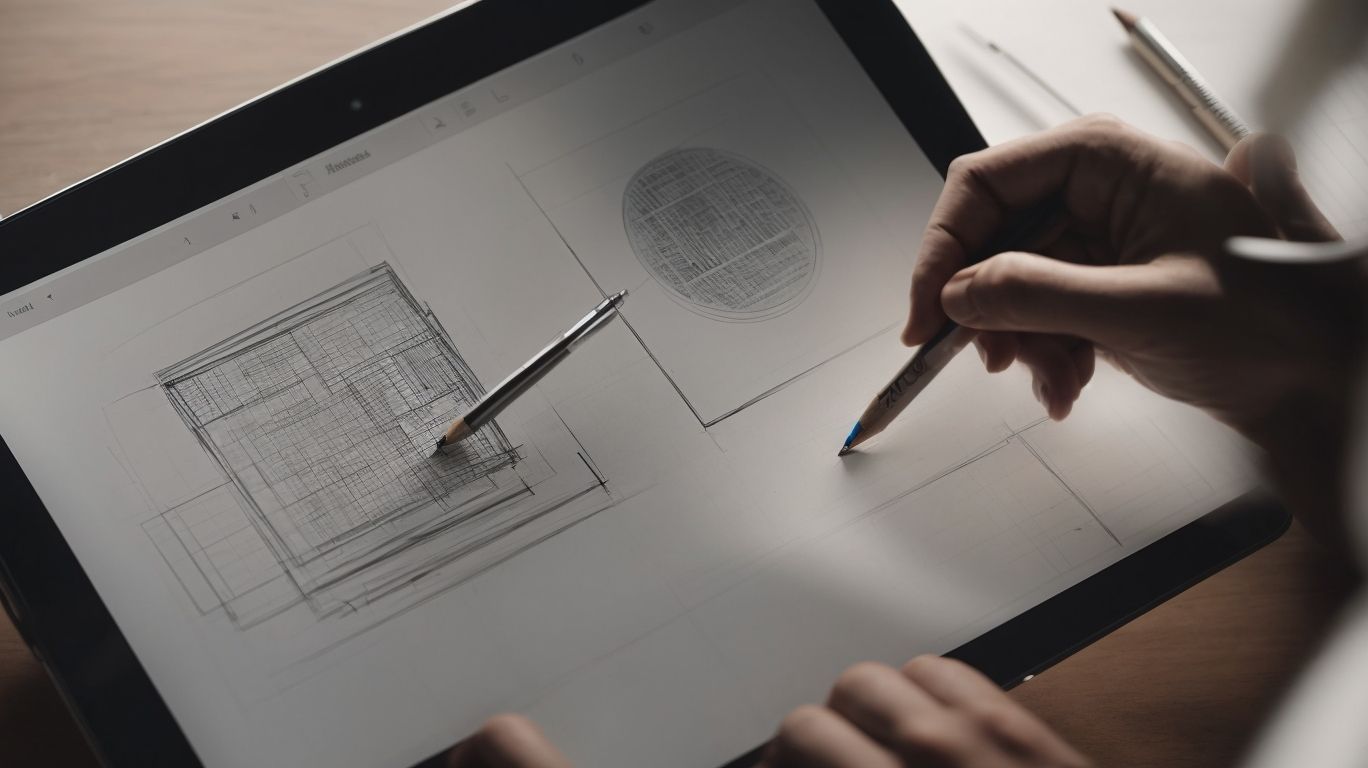Are you a beginner in the world of web design and development? If so, understanding the concept of website wireframing is essential. In this comprehensive beginner’s guide, we will explore the importance of website wireframing, its key elements, the tools that can be used for wireframing, and how to create an effective wireframe.
Whether you’re a budding web designer or a business owner looking to better understand the process, this article has got you covered. So, let’s dive in and demystify the world of website wireframing!
What Is Website Wireframing?
A beginner’s guide to website wireframing entails creating a visual representation of the website’s layout, navigation, and functionality. This serves as the foundation for the design process in digital and web design, adhering to UI/UX and user-centered design principles.
This process involves sketching out the basic structure of the website, including key design elements such as headers, footers, content areas, and interaction points. Through wireframing, web developers and designers can map out the user journey and ensure a seamless, intuitive navigation experience.
It also allows for early feedback and iteration, saving time and resources in the later stages of development. By focusing on user needs and goals, wireframing contributes to creating user-friendly and visually appealing websites.
Why Is Website Wireframing Important?
Website wireframing holds significant importance in the design process as it lays the foundation for optimal user experience, facilitates user interaction, streamlines layout, and organizes information architecture and content structure.
Wireframes are a crucial tool for designers, as they provide a visual guide for element placement on a website. This includes navigation menus, buttons, and content sections, allowing for a seamless and intuitive user experience. By aligning with user behavior and expectations, wireframes ensure a more efficient and user-centric design process.
Furthermore, wireframes allow for early validation of the overall layout organization, ensuring a smooth and effective website flow for visitors. This not only enhances user experience but also improves search engine indexing, making it a crucial aspect of website design.
What Are the Key Elements of a Wireframe?
The key elements of a wireframe encompass the website’s layout, navigation structure, functional elements, and adherence to design principles and user-centered design, culminating in a cohesive and user-centric website design.
Wireframes play a critical role in visually mapping out the essential components of a website. They provide a blueprint for the overall design and layout organization, ensuring a cohesive and intuitive user experience.
By incorporating design principles such as hierarchy, alignment, and consistency, wireframes help guide the user’s journey through the website. This results in a more efficient and engaging experience. User-centered design elements, such as clear call-to-action placement and intuitive navigation, are emphasized in wireframes to create a seamless flow for the user.
The meticulous planning and attention to detail at the wireframing stage have a significant impact on the final website’s functionality and visual appeal. It sets the foundation for a successful and user-friendly website.
Layout
The layout of a wireframe plays a pivotal role in shaping the overall website design, adhering to essential design principles and incorporating key design elements to enhance user experience and visual appeal.
A website’s structural foundation is built upon its wireframe layout, dictating element placement, navigation flow, and overall aesthetic. This layout not only guides the design process, but also integrates content and functionality seamlessly. By strategically arranging components like headers, footers, and navigation menus, the wireframe sets the stage for a cohesive and intuitive user interface.
With careful attention to layout details, a well-designed wireframe leads to a stunning website that also delivers a user-friendly experience.
Content Placement
Careful content placement in a wireframe is crucial for structuring the website’s information architecture, optimizing design elements, and ensuring a cohesive and user-friendly content structure.
Content placement plays a pivotal role in guiding users through the interface. It directs their attention to key elements and creates a seamless flow of information.
Effective content placement also aids in establishing a logical hierarchy of information. This allows for intuitive navigation and enhances the overall user experience.
By strategically placing content within wireframes, designers can address the needs of the target audience. They can also deliver relevant information effectively and support the visual and functional aspects of the website design.
Navigation
The navigation component in a wireframe is essential for facilitating user interaction, optimizing user experience, and incorporating design elements that enhance the overall website design and functionality.
Effective navigation serves as the roadmap for users, guiding them through the website seamlessly and intuitively. It ensures that users can easily access the information they seek, reducing bounce rates and increasing engagement.
Navigation elements play a pivotal role in the visual hierarchy of the website, organizing content in a user-friendly manner. The integration of navigation elements in wireframing allows designers to test and refine the website’s structure before moving on to the visual design phase, ultimately contributing to a cohesive and impactful user experience.
Functionality
Functionality within a wireframe serves as the cornerstone for prototyping, user interface development, and facilitating user interaction, laying the groundwork for a seamless and interactive website design.
Wireframes play a crucial role in accurately representing the behavior and features of the final product. By integrating functionality early in the design process, designers can test and refine the user experience, identify potential navigation challenges, and streamline the overall layout.
This approach fosters a user-centric approach, where the focus remains on creating a design that not only looks visually appealing but also delivers optimal usability and functionality. The ultimate aim is to create wireframes that effectively communicate the interactive elements and user interface components, enabling stakeholders to visualize the end product effectively.
What Tools Can Be Used for Wireframing?
When embarking on wireframing, a range of tools can be employed, including wireframing software, templates, and examples, providing a comprehensive and dynamic array of resources to facilitate the wireframing process.
Wireframing tools offer a variety of techniques to create mockups. These include drag-and-drop functionality and customizable grids, making the design experience intuitive and user-friendly.
Additionally, these tools come equipped with an extensive library of templates, catering to diverse design needs. From website layouts to mobile app interfaces, there is a template for every project.
For beginners, these tools also offer preset guidelines and tutorials embedded within the software. This eases the learning curve and enables them to quickly grasp the essentials of wireframing.
Pen and Paper
Utilizing traditional pen and paper for wireframing provides a simplistic yet effective approach, serving as an accessible and versatile method for beginners to grasp fundamental wireframing techniques.
This method allows individuals to freely explore their creativity without being limited by the functionalities of digital tools. The tactile experience of drawing on paper can enhance the brainstorming process and enable quick iterations, fostering a deeper understanding of layout and design concepts.
The lack of learning curve associated with digital software makes pen and paper a practical choice for those who are new to wireframing, enabling them to focus on the core principles of layout and structure. Pen and paper wireframing offers a hands-on, intuitive way to conceptualize and iterate designs.
Digital Wireframing Tools
Digital wireframing tools offer a sophisticated and streamlined approach to wireframing, integrating seamlessly into the design workflow, and providing a diverse array of design techniques and resources for comprehensive wireframing.
Digital wireframing tools empower designers by providing precision and efficiency in creating dynamic wireframes. They allow for quick iterations and real-time collaboration, enhancing the overall design process.
The integration of these tools into design software improves accessibility and usability, resulting in better user experiences. Additionally, their extensive libraries of pre-built components and templates expedite the design phase, freeing up designers to focus on creativity and innovation.
Online Wireframing Tools
Online wireframing tools offer a collaborative and dynamic platform for wireframing. They provide access to diverse templates, examples, and best practices, while integrating essential design principles and tools for effective wireframing.
Designers and teams can collaborate in real time using these tools. This makes it easier to share and integrate feedback, which is essential for creating a cohesive and well-structured wireframe.
These platforms offer a variety of interactive and customizable templates. This allows for the exploration of different design options, promoting creativity while also adhering to best practices.
By incorporating design principles like usability, accessibility, and visual hierarchy, wireframes created on these platforms align with industry standards. This ensures a user-centric and visually appealing interface.
How to Create a Wireframe?
Creating a wireframe involves defining the purpose and goals of the website, gathering relevant content, sketching out the basic layout, incorporating content and functionality, and testing and refining the wireframe to ensure a seamless and responsive design process.
This comprehensive process requires a keen understanding of user experience principles to ensure intuitive navigation and efficient information hierarchy.
Designers often utilize prototyping tools and software to bring wireframes to life, allowing stakeholders to visualize the website’s structure. With a focus on responsive design, wireframes must adapt to various screen sizes and resolutions while maintaining consistency in the user interface.
Considering accessibility and usability ensures the wireframe effectively addresses the needs of diverse user demographics.
Define the Purpose and Goals of the Website
Defining the purpose and goals of the website is the foundational step in the wireframing process, aligning with essential design principles, concepts, and components to drive the overarching design process.
The wireframe sets the direction for the entire design journey, guiding the layout, functionality, and user experience. By integrating relevant keywords, it effectively communicates the website’s objectives and resonates with the intended audience.
This initial clarity ensures that every design decision remains purpose-driven, contributing to a cohesive and user-centric interface. Aligning wireframes with the website’s goals establishes a strong foundation for iterative design improvements and fosters consistency throughout the development phase.
Gather Relevant Content and Information
Gathering relevant content and information is critical for understanding user behavior, structuring content, and establishing an organized information architecture within the wireframing process.
Wireframes are essential tools for designers to accurately represent user needs and expectations, resulting in intuitive and user-friendly interfaces.
By incorporating relevant keywords into the wireframing process, the content structure can be optimized for SEO strategies, making the final product more visible and accessible.
A thorough understanding of content and information gathering is crucial for seamlessly integrating visual and textual elements, creating a cohesive user experience.
This proactive approach ultimately enhances the effectiveness of wireframing and contributes to the success of the end product.
Sketch Out the Basic Layout
Sketching out the basic layout serves as the initial creative phase in the wireframing process, incorporating design aesthetics, strategies, and essential design elements to establish the visual foundation of the website.
This stage plays a crucial role in the overall design as it sets the tone for the user experience and functionality. By outlining the placement of key elements such as navigation, content areas, and interactive features, wireframing helps ensure a cohesive and intuitive layout.
It allows designers to iteratively refine the structure before delving into the finer details, leading to more efficient workflows and optimized user interactions. Ultimately, a well-crafted wireframe serves as a blueprint for the website’s design, enhancing the overall development process and end-user satisfaction.
Add in Content and Functionality
Incorporating content and functionality within the wireframe enhances the prototyping phase, integrating design techniques, workflow considerations, and essential design software to achieve a cohesive and interactive website design.
This process not only streamlines the development of the website but also ensures that the final product meets the requirements of the clients and the end-users.
By focusing on the user experience and interface design at this early stage, designers can effectively address potential issues and make necessary adjustments before moving to the next phases of development. It allows for a more accurate visualization of the website’s structure and functionality, creating a solid foundation for the subsequent design and implementation stages.
Test and Refine the Wireframe
Testing and refining the wireframe is a critical step in ensuring user-centered design, implementing best practices, and refining design patterns to create a seamless and user-friendly website design.
Designers can use wireframes to identify potential usability issues, navigation challenges, and overall user experience before moving into the development phase.
Through user testing sessions, valuable feedback and insights can be gathered to inform iterative improvements to the wireframe. This ensures that the final product meets the needs and expectations of the target audience.
Additionally, this process helps identify areas where design patterns can be refined for enhanced usability and visual appeal, ultimately contributing to a more effective and engaging website design.
What Are Some Tips for Creating an Effective Wireframe?
To optimize readability and SEO, it’s advisable to break paragraphs into concise, easily digestible sentences. Add
tags to the text given and aim for a maximum of two sentences per
tag section, allowing multiple
tags. This approach enhances user experience and search engine indexing. Also, add
tags to important keywords and phrases, and
tags for quotes.
When creating an effective wireframe, it is essential to keep it simple and clean, use consistent design elements, consider user experience, and solicit feedback for continuous improvement and adherence to design best practices.
One important aspect to consider is the use of visual hierarchy, where the most important elements are emphasized to guide the user’s attention.
Aligning with user-centered design principles involves understanding the target audience and creating wireframes that cater to their needs and preferences.
Incorporating intuitive navigation and clear call-to-action buttons helps enhance the user experience.
It’s also crucial to maintain consistency in design elements, such as typography, color scheme, and spacing, throughout the wireframe to ensure a cohesive and polished look.
Keep it Simple and Clean
Keeping the wireframe simple and clean aligns with fundamental design principles, aesthetics, best practices, and strategies, ensuring a visually appealing and user-centric wireframe.
A simple and clean wireframe provides a clear visual representation of the interface, making it easier for designers and stakeholders to comprehend the layout and functionality. It allows the focus to remain on the core structure and functionality without being overshadowed by unnecessary details, resulting in a more efficient design process.
A clutter-free wireframe encourages better communication and collaboration among team members, facilitating smoother iterations and revisions. This adherence to simplicity and cleanliness fosters a cohesive and intuitive user experience, ultimately enhancing the usability and effectiveness of the final product.
Use Consistent Design Elements
Employing consistent design elements in the wireframe is essential to establish a cohesive visual language, leveraging design techniques, workflow considerations, and essential design software for comprehensive wireframing.
A seamless user experience is achieved through the use of consistent interface elements, such as buttons, icons, and typography, across various screens. This promotes intuitive navigation and understanding for users. Additionally, maintaining consistency in wireframes aids in effectively communicating design intent to both the development team and stakeholders, resulting in a smoother workflow. Design software like Adobe XD, Sketch, or Figma offers the necessary tools for creating and maintaining visual coherence, allowing designers to easily iterate and refine wireframes.
Consider User Experience
Prioritizing user experience in the wireframe entails understanding user interaction, behavior, and aligning with essential design principles and concepts to create a seamless and user-friendly website design.
This approach involves structuring the layout, navigation, and visual elements in a way that anticipates and accommodates user needs and preferences.
By focusing on user experience, wireframing can significantly impact how users engage with the website, influencing their decision-making and overall satisfaction. It also plays a crucial role in conveying the brand’s identity and message effectively.
Incorporating user-centered design methodologies and usability testing at the wireframing stage can enhance the overall quality of the final product, leading to a more intuitive and engaging user interface.
Get Feedback and Make Revisions
Soliciting feedback and making revisions in the wireframing process is integral to user-centered design, incorporation of best practices, refining design patterns, and ensuring alignment with user behavior for an optimal website design.
Designers can gather valuable insights from various stakeholders, including end-users, to create an intuitive and efficient user experience. This involves incorporating feedback and refining wireframes to address user pain points, enhance usability, and align with the latest design trends.
Revisions also allow for the validation of design decisions, ensuring that the final website design reflects the expectations and behaviors of the target audience. This ultimately leads to higher user satisfaction and engagement.
Frequently Asked Questions
What is website wireframing and why is it important?
Website wireframing is the process of creating a visual representation of a website’s layout and functionality. It is important because it allows for planning and organizing the website’s structure before moving on to the design and development phase.
What are the benefits of creating a website wireframe?
Creating a website wireframe helps to identify potential design and functionality issues early on, allows for easy communication and collaboration with clients and team members, and saves time and resources in the long run.
Do I need any prior design or technical skills to create a website wireframe?
No, you do not need any prior design or technical skills to create a website wireframe. There are many user-friendly wireframing tools available that do not require any coding or design experience.
What elements should be included in a website wireframe?
The main elements that should be included in a website wireframe are the page layout, navigation, content sections, and basic design elements such as colors and fonts. Additional elements can be added based on the specific project requirements.
How many iterations of website wireframing should be done?
The number of iterations of website wireframing can vary depending on the complexity of the project and the amount of feedback and changes needed. Generally, 2-3 iterations are enough to create a solid wireframe before moving on to the design phase.
Can I skip wireframing and go straight to designing my website?
While it may be tempting to skip the wireframing process and jump straight into designing your website, it is not recommended. Wireframing helps to identify potential issues and make necessary changes before investing time and resources into the design phase. Skipping wireframing can result in a poorly organized and inefficient website.






